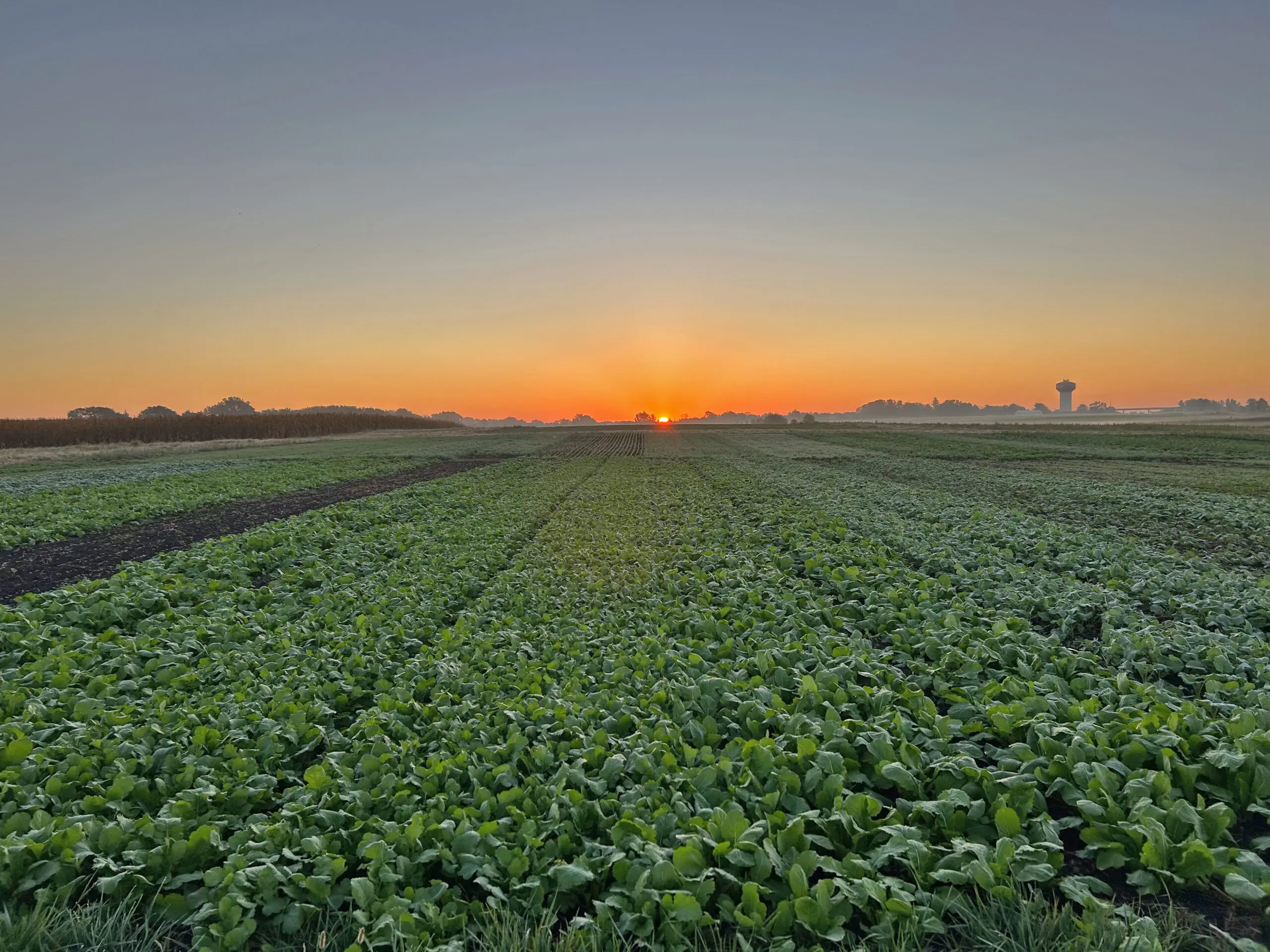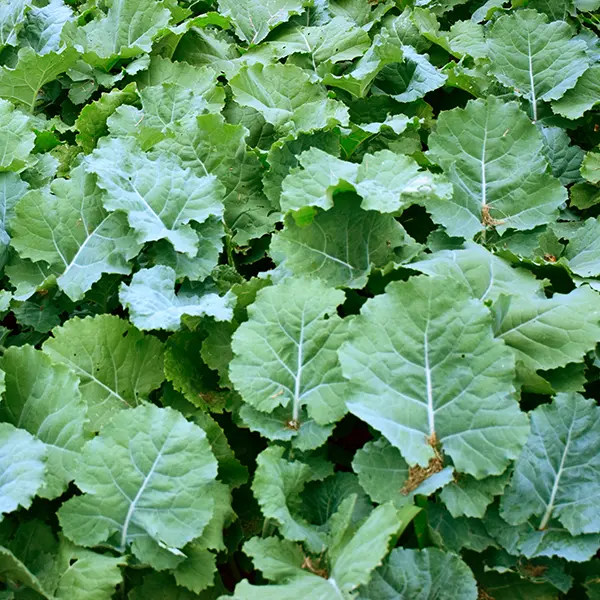BRASSICAS
Brassica is a genus of plants in the mustard (Brassicaceae) plant family, also known as cruciferous cole crops. More than 30 wild species and hybrids are in cultivation, plus numerous cultivars and hybrids of cultivated origin. Almost all parts of cultivated species contain nutritional value, including the root, stems, leaves, flowers, buds, and seeds. They provide high amounts of Vitamin C and soluble fiber.
Best uses: Cover crop and fall grazing for livestock. All brassicas have highly digestible cell walls, very high protein levels, and are very succulent. Excellent for grazing and cover cropping (typically as part of a mix.) High dry matter production both above and below ground builds organic matter in the soil. Also good for deer food plots due to their high palatability, frost-tolerance, and availability in the fall. Use for fall grazing cattle, sheep, hogs, and in food plots.
Adaptation: Brassica plants require well-drained soil rich in organic matter with a PH between 5.5 and 6.5.
Grazing: Graze Brassicas carefully; too much intake can cause health problems ins cattle. Mixing with grass improves ruminant digestion and utilization. Allow livestock time to adjust to a change in diet when beginning grazing.
RAPESEED
- Succulent plant (high percentage H2O) related to cabbage
- Persists well after the first frost but usually doesn’t overwinter in the Upper Midwest
- Some seed dormancy has been observed
Best Use: Forage for hogs, cattle, sheep, and young stock. Can be grazed multiple times. Not for haying (does not dry).
Management: Ready to pasture in 6 to 8 weeks. Keep it grazed or mown so that it doesn’t get tall and woody. Use to supplement perennial cool-season pastures (down to 18-20° F) in August and September or interseed into warm-season grasses to improve their feed quality. Can result in blister in white pigs when grazing and exposed to sunlight.
Planting Date: Early spring until September 1
Seeding: 4-7 lbs/acre, ¼ to 1/2 inch deep

